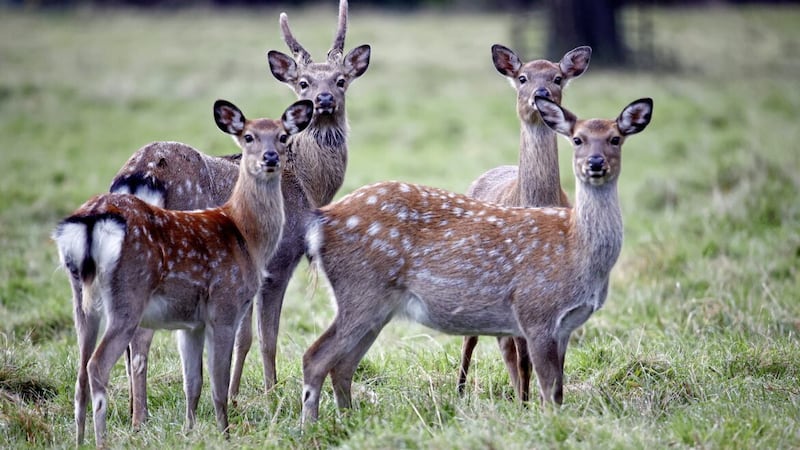JANUARY'S belligerent grip on winter darkness is slowly waning, with earlier morning light now mirroring the evening 'stretch', nudging a local song thrush to utter an early invitation to spring with its clear repetitive phrasing, just as dawn breaks.
The low sun and blue sky of the morning which followed, also nudged me in the direction of some neighbouring hillsides in search of raptors and other wild offerings.
One of the many joys of visiting remote areas is the anticipation of what might be encountered - a bird or animal behaving naturally in their own wild domain, oblivious to human presence. The experience of looking in on the lives of wild creatures and sharing their space feels like a gift, to be received with gratitude.
As I scanned the sky and slopes for hint of feather on the wing in lofty flight or with predatory intent, movement lower down at the woodland edge caught my eye.
Shifting the focus of my binoculars, six sika deer came into view, grazing on open ground. Like the deer in Oscar Wilde's Out of the Forest, they had emerged, "Out of the mid-wood's twilight/Into the meadow's dawn".
Light of foot, they coasted down the hill, stopping occasionally to raise their heads and assess any threat. Switching to the telescope, I watched them staying close, their wild, untamed eyes ever alert to danger.
Seeing the detail of their frames and being, I pondered on their ancestral journey from Japan to Ireland in 1860 when Lord Powerscourt brought a sika stag and three hinds as 'decorative additions' to his estate grounds in Co Wicklow.
After breeding there, sika were given as gifts to other estates throughout the country, in Kerry, Monaghan, Fermanagh, Limerick and Down. Over the following decades, escapees established themselves in the wild, forming herds in many other counties including Tyrone, Donegal, and Kildare.
Sika, the Japanese word for 'deer', are Ireland's smallest deer with stags up to 80cm tall at the shoulder and females less tall at around 70cm. Coat colour ranges from a light to dark brown with light spots and a very dark stripe along the back.
The underside is much lighter, and sikas also have a distinctive white rump. They are mostly grazers feeding on grasses and heathers but are also opportunistic, browsing on shrubs, tree buds, twigs, and fruits, often a problem in and around forestry plantations where they thrive and farmland too as they like root crops.
Other deer species in Ireland include: our native red deer which have, in places, interbred with sika; fallow deer, a 13th century introduction by the Normans; and Reeves's muntjac deer, introduced illegally here around 2000 and considered an invasive species which Irish zoologist, Dr Ruth Carden, says, "has the capacity to cause enormous damage to habitat and crops".
Deer have long been admired in Ireland's ancient stories for their speed, agility and strength, featuring prominently in tales of Fionn Mac Cumhaill, his son Oisín, saying "the roar of the stag is sweeter to me/than the music the clerics chant". Mad Sweeney, the outcast king, also said of the stag's roar, "there is no music on earth in my soul but its sweetness".
Returning to my car, I pondered on the scale of the pathway these noble animals had taken and their experiences from the original breeding stock of 1860, tales of resilience and fortitude, through Ireland's wild places.
As I packed away my gear, a male great tit on a nearby ash tree burst into song, pushing out his distinctive shrill notes, yet another summons for spring to step forward.







